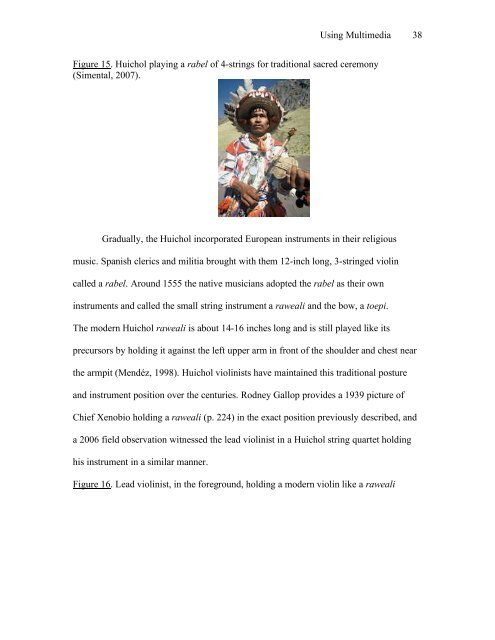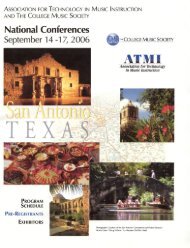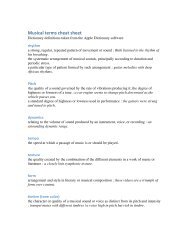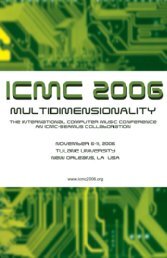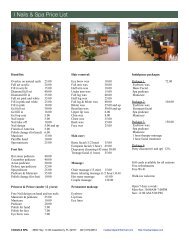Using Multimedia to Expand the Audience of ... - Richard Repp
Using Multimedia to Expand the Audience of ... - Richard Repp
Using Multimedia to Expand the Audience of ... - Richard Repp
Create successful ePaper yourself
Turn your PDF publications into a flip-book with our unique Google optimized e-Paper software.
<strong>Using</strong> <strong>Multimedia</strong> 38<br />
Figure 15. Huichol playing a rabel <strong>of</strong> 4-strings for traditional sacred ceremony<br />
(Simental, 2007).<br />
Gradually, <strong>the</strong> Huichol incorporated European instruments in <strong>the</strong>ir religious<br />
music. Spanish clerics and militia brought with <strong>the</strong>m 12-inch long, 3-stringed violin<br />
called a rabel. Around 1555 <strong>the</strong> native musicians adopted <strong>the</strong> rabel as <strong>the</strong>ir own<br />
instruments and called <strong>the</strong> small string instrument a raweali and <strong>the</strong> bow, a <strong>to</strong>epi.<br />
The modern Huichol raweali is about 14-16 inches long and is still played like its<br />
precursors by holding it against <strong>the</strong> left upper arm in front <strong>of</strong> <strong>the</strong> shoulder and chest near<br />
<strong>the</strong> armpit (Mendéz, 1998). Huichol violinists have maintained this traditional posture<br />
and instrument position over <strong>the</strong> centuries. Rodney Gallop provides a 1939 picture <strong>of</strong><br />
Chief Xenobio holding a raweali (p. 224) in <strong>the</strong> exact position previously described, and<br />
a 2006 field observation witnessed <strong>the</strong> lead violinist in a Huichol string quartet holding<br />
his instrument in a similar manner.<br />
Figure 16. Lead violinist, in <strong>the</strong> foreground, holding a modern violin like a raweali


